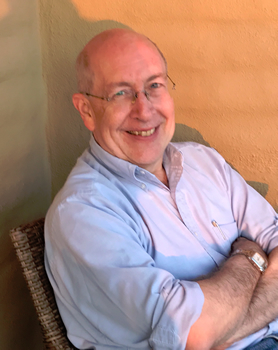Secrets, Poison, and Revenge
“She would come at daybreak – the woman whose letter I held in my hands, the woman whose name I did not yet know.
“I knew neither her age nor where she lived. I did not know her rank in society nor the dark things of which she dreamed when night fell. She could be a victim or a transgressor. A new wife or a vengeful widow. A nursemaid or a courtesan.
“But despite all that I did not know, I understood this: the woman knew exactly who she wanted dead.”
In Sarah Penner’s dazzling debut, THE LOST APOTHECARY (Park Row), the speaker is Nella Clavinger, the one-woman proprietor of a shop “buried deep behind a cupboard wall at the base of a twisted alleyway in the darkest depths of London” in 1791. She is there to dispense poisons to desperate women who have been wronged, her own dark tragedy driving her to aid those for whom there is no other recourse. She has been doing it for twenty years, her profession gradually taking a toll on her, but nothing like what she is about to experience, when two clients in particular enter her life within the same month, one of whom will be her destruction, the other her salvation, though which is which is not immediately clear.
Hers is only one of the stories in the book, however. The other belongs to Caroline Parcewell, in present-day London for her tenth wedding anniversary, but alone, grieving and furious at her husband’s infidelity and facing some hard choices about the entire disappointment that has become her life. On a whim, she joins a group of mudlarkers, hobbyists who search the banks of the Thames for hidden treasures—“Tide comes in, tide goes out, overturning something new each time”—and unearths an old apothecary vial. With time on her hands and a lifelong interest in archives and ephemera, “the untold secrets of ordinary people,” she sets out to discover more about it. What she does discover, though, is more than she could possibly have imagined, a secret that will set her on a collision course across the centuries.

Audacious, subversive, wildly imaginative, filled with richly imagined characters, THE LOST APOTHECARY will put you immediately under its spell — and eyeing your partner speculatively.
“I began with the idea of a woman-centric novel,” says Penner, “and I wanted each of the POV characters to have agency. I wanted them to make things happen—not to just react to what was happening to them. For the apothecary, Nella, I took it even further: I wanted her to support, even represent, women throughout the entire city of London in the late 18th century. I imagined very clearly this haven—a safe place for women to seek remedies for their ailments, even if this ‘ailment’ was a scheming husband. My book also explores women’s lack of power in the 18th century, and the importance of banding together with other women to take control in whatever way possible.”
As for the mudlarking: “I first learned about it years ago, while reading London in Fragments: A Mudlark’s Treasure by Ted Sandling. In the book, he shares striking images of interesting things he’s found near the River Thames in London. It is here that I first spotted a fragment of a mid-seventeenth century delftware apothecary jar, and the inspiration for THE LOST APOTHECARY was born. I knew instantly the story would begin with a woman in the present day who finds an apothecary vial while mudlarking.
“I didn’t actually have the chance to go mudlarking myself until the summer of 2019, after I was already agented and we were working on revisions to the manuscript. Over the course of several days, I went down to the river three separate times, finding an assortment of pottery, clay pipes, metal pins, even animal bones. Mudlarking has been around for hundreds of years. Victorian children used to scrounge around in the mud looking for items to sell. Today, mudlarking isn’t meant to support the livelihood of a family, but instead represents a pastime for locals and tourists alike.
“I clung to the idea of an apothecary from the get-go. The word apothecary is evocative, drawing forth visions of a candlelit storefront with sash windows, its walls lined with mortar bowls and pestles and countless glass bottles. There is something beguiling, even enchanting, about what might lie within those bottles: potions that bewitch us, cure us, kill us. When describing Nella’s hidden shop, I did my best to capture this allure. Indeed, many contemporary retail shops are doing the same, and it seems most cities now have some sort of ‘apothecary’ shop selling cosmetics or natural remedies.
“Though there is no real-life inspiration for the apothecary in my story, I believe it’s entirely possible, if not probable, that an apothecary shop like Nella’s existed prior to the nineteenth century. Until the mid-1800s, death examiners were unable to detect the presence of poison when performing autopsies, and thus poisoning homicides are rarely mentioned in bills of mortality prior to this time. But this doesn’t mean poisoning deaths weren’t occurring—they merely went undetected.
“Interestingly, after early readers got their hands on THE LOST APOTHECARY, many said the story reminded them of the 17th century Italian poisoner Giulia Tofana, who confessed that her poisons killed more than six hundred men.”
Getting the details right required a lot of work: “Researching the many herbal and homespun remedies for this story was a time-consuming, albeit entertaining, task. I spent hours in the British Library, reviewing old manuscripts and druggist diaries; I reviewed digitized pharmacopeias; and I studied extensively some well-known poisoning cases in the eighteenth and nineteenth centuries. I was surprised by the number of plants and herbs that are highly toxic (including many household plants), and I was fascinated while reading about the clever, if ineffective, remedies used by the predecessors of modern-day pharmacists.
“One of the most surprising things I learned was how readily available were toxic compounds like arsenic, nux vomica, mercury, and opium in shops throughout the 18th century. There was very little control over these substances, like we see today. The effects of such toxins are macabre, and these details surprised me, too. I won’t go into detail here, though my book reveals a fair bit.”
She does go into detail about her background, however. On her website, her bio begins with a very intriguing sentence—“I was born and raised in northeast Kansas, growing up in a small log cabin nestled deep in the woods”—and she is happy to expand on it:
“Years before I was born, when my parents married and were searching for a house, they fell in love with a literal log cabin in the woods. It was on three acres of woodland with a stream in the back. Two bedrooms, a massive stone fireplace, no neighbors in sight. I lived there for 18 years … my entire childhood. It was an idyllic place to grow up. When it snowed, it was like being in the center of a snow globe: white, silent, dream-like. Living in the country made me very independent; some of my first ‘toys’ were a compass, whistle, and books about wildlife. I didn’t have siblings at home, and this was pre-internet, so I entertained myself with the woodland and went on backyard hikes through much of my childhood, pretending to use my compass even though I was quite close to home. I had to invent my own fun … perhaps that is where some of my storytelling and imagination originated?”
It might even explain some of her writing habits: “I’m a longtime member of the #5amwritersclub, and I tend to do my best work at this hour, before the rest of the world has even gotten out of bed. Something about the total silence, the darkness outside, the hot cup of coffee … it’s a sort of dream-like state, and conducive to my creativity. I don’t write with music (I need total silence) and I’m also an “under-writer,” so I draft short and then build in characterization and setting with each subsequent draft. I don’t write longhand, either. I think too quickly, and may lose a thought if I can’t get it down within seconds.”

All those drafts paid off, however, even though it took a while to do so. As she recounts in an essay on her website, first came another novel, which nobody wanted—130 agents declined it. She kept at it, though, and did her homework—pay attention, aspiring authors—about the best way to query a novel: “I attended webinars with Writer’s Digest; I sought feedback on my query letter via Twitter friends and QueryTracker forums; I participated on contests like Pitch Wars and RevPit. And, of course, I started writing something brand new.”
After sixteen months drafting and revising THE LOST APOTHECARY, she sent out queries to twelve agents, and resigned herself to waiting. Instead, within twenty minutes, she received two requests for the full manuscript, and within a few days, she had her first agent offer. Soon, she had five of them, and had to begin the “agonizing” process of choosing which one to go with. Once more—pay attention again—she did her homework. She spoke on the phone with all five and “through my discussions, I learned an enormous amount about foreign rights, book fairs, royalties and advances, and editorial visions. All five agents referred me to existing clients. I must have corresponded with close to twenty authors in a week.”
Finally, it all paid off when she chose Stefanie Lieberman at Janklow & Nesbit, in part because of Lieberman’s “hands-on editorial style.” Several months and three or four drafts later, the book went out on submission, and Penner again resigned herself to waiting.
But Park Row Books preempted it within 24 hours. A few days later, it was sold to eleven (now twelve) territories around the world. More revisions followed, more drafts—and now, here I am writing about it.
What’s next for Penner? “Stay tuned—I’ll tell you when I know, hah! But in all seriousness, I’m very much drawn to historical mysteries/thrillers, and I enjoy writing clever, twisty plots. I also love crafting stories about brave, badly behaved women. So I suspect I’ll stay in this vein, at least for the next book or two.”
And I suspect we’ll all be very glad she did.
*****
Neil Nyren retired at the end of 2017 as the executive VP, associate publisher and editor in chief of G. P. Putnam’s Sons. He is the winner of the 2017 Ellery Queen Award from the Mystery Writers of America. Among his authors of crime and suspense were Clive Cussler, Ken Follett, C. J. Box, John Sandford, Robert Crais, Jack Higgins, W. E. B. Griffin, Frederick Forsyth, Randy Wayne White, Alex Berenson, Ace Atkins, and Carol O’Connell. He also worked with such writers as Tom Clancy, Patricia Cornwell, Daniel Silva, Martha Grimes, Ed McBain, Carl Hiaasen, and Jonathan Kellerman.
He is currently writing a monthly publishing column for the MWA newsletter The Third Degree, as well as a regular ITW-sponsored series on debut thriller authors for BookTrib.com, and is an editor at large for CrimeReads.
This column originally ran on Booktrib, where writers and readers meet:



